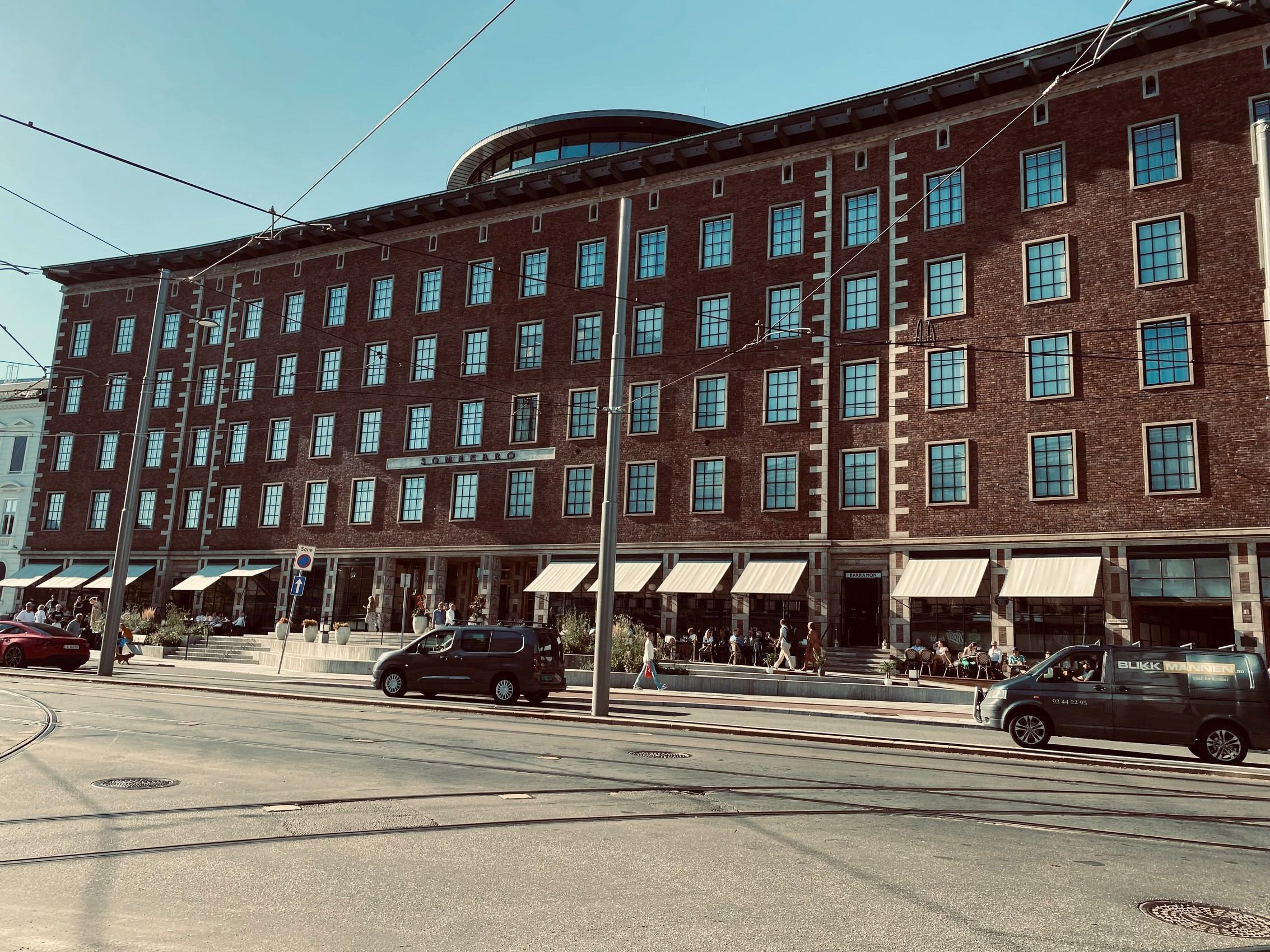JEP editor Andy Sibcy and his wife recently visited Norway to stay at the Sommerro, a stylish 231-bedroom hotel that has been labelled “the coolest and hippest hotel in Oslo” by fashion magazines. But did it live up to the hype?
SINCE it opened just over a year ago, some of the most iconic names in travel and fashion journalism have been falling over themselves to feature Oslo’s newest hotel. Vogue, Condé Nast, Glamour and many others have raved about the unique appeal of the Sommerro in the city’s up-market Frognor district.
“This is the new place to stay in Norway’s capital”, says one, “arguably the coolest” and “the hippest” hotel in Oslo add others. From day one, it has apparently become a magnet for the city’s uber stylish metropolitan set, attracted by the promise of Great Gatesby decadence, exceptional food, jazz and cocktails in a building whose architecture and interior design evoke the glamour of the 1930s. A place loved by locals as much as sophisticated, discerning global travellers.
The Sommerro has 231 bedrooms or suites, 13 private-hire rooms, including five “light-filled boardrooms”, five restaurants and three bars, a library, small cinema, large gym, spa and an original art deco swimming pool. And all of this crowned with the city’s only roof-top fine-dining restaurant, terrace, swimming pool and sauna.
It sounded vast, more like a cruise ship than the sort of intimate and relaxing haven we craved on our first break without children for more than a decade. And the gushing stuff about it being so hip triggered the skeptic in me, a dad greying into middle age. I hoped we’d made the right choice.

This was to be a holiday of two halves, the perfect balance of comfort, culture and city chill followed by a few days of nature and adventure, hiking in the stunning mountain wilderness of the Jotunheimen national park four hours to the north.
As we sat on the train from Oslo Airport into the city centre, a 30-minute journey on a spotlessly clean and refreshingly on-time service, I looked across at my bulging backpack, stuffed with tent, stove, sleeping bag, Thermorest, first aid kit, camping food and clothing for all the seasons Norway can throw at you in one day in the mountains. There is no such thing as bad weather, just bad clothing, so the nation’s proverb goes. I pictured myself climbing the steps into the Sommerro in walking boots and trousers and wondered whether we’d feel uncomfortably out of place in this cool new hotel.
I needn’t have worried. It turns out that one of the many cool things about this amazing country is its approach to cool. It is all about focusing on the stuff that matters and not being a d**k about the rest – just think about the people around you and we’ll all be fine. And “friluftsliv” – literally free-air life, which means embracing nature and outdoor activities year-round – is hardwired into the national identity, and central to high levels of health and happiness among Norwegians. Suffice to say, we were given a very warm welcome and made to feel at home instantly.

Even before you enter the Sommerro, you get a feel for just how special this place is. A mix of perfect neoclassical proportions, functionalist features and art deco details, the stunning 1930s building has been a city landmark for generations. Formerly, the headquarters of Oslo Lysverker, the city’s electrical company, its painstaking refurbishment, a multi-million-pound project involving a partnership between the municipal authorities and Nordic Hotels, is testament to what great vision, passion and dedication can achieve, and how it can transform and regenerate an area. The waterfront area a short walk from the hotel is another example of what vision and a coherent masterplan can deliver. The place was buzzing. Jersey could learn a lot.
If great architecture and a uniquely stylish aesthetic are ingredients of an exceptional hotel, the Sommerro has them in spades and can boast a long list of others. The beautiful original features which evoke the glamour and style of the swing age are complemented by bespoke furniture, exquisite design, marquetry, works of art, perfect lighting and even a specially designed soundscape to create a sense of unfussy elegance. The staff, dressed in suits and trainers, were always helpful and friendly, and echo the laidback vibe of the place. And the food was superb.
On the ground floor is the Ekspedisjonshallen, billed as the “neighbourhood living room”, where food is served all day, including the most amazing breakfasts. Complete with the original 1930s wall fresco by artist Per Krohg (who also created the United Nations Security Council mural in New York) celebrating the arrival of electricity in Oslo, the room is the beating heart of the hotel. Often featuring the house jazz band, it’s laid back and, they say, “anything goes”.

We also ate at Tak, the Nordic-Japanese roof-top restaurant which looks out over the city of Oslo Fjord. The meal was delicious and, reassuringly, the place was packed with locals.
Nordic Hotels wanted the Sommerro to be a destination in itself and they have succeeded. It’s a hard place to leave.
The city itself is relatively small and the hotel is well placed to explore its many attractions on foot. We clocked up some serious steps, but it was a great way to get around and you can always jump on a tram if you get tired and be dropped off right outside the hotel.
The National Gallery, which houses Edvard Munch’s Scream (which was rather ruined by crowds of tourists taking selfies in front of it in a display of self-obsession which seemed profoundly un-Norwegian) was an excellent place to spend several hours. We took a ferry from the Aker Brygge wharf near the hotel across the fjord to the amazing Fram Museum. It tells the astonishing story of polar exploration and features the Fram, the strongest wooden ship ever built, which you can go aboard and look into the cabins used by some of the most famous polar explorers. The boat took Amundsen to the Antarctic and was used to explore the northwest passage. We walked to the Oslo Opera House, the Royal Palace and the Vigeland Sculpture Park, and watched people enjoying the many harbourside saunas before leaping into the water. I’d recommend everything we did. In three days, we hardly scratched the surface of what was available and vowed to return.
It is a city that feels full of wholesome life and a great place to head for a city break. And if you do decide to go, you really have to stay at the Sommerro. You’ll soon slip into its cool Scandi embrace and I wage a bet you won’t want to leave.






